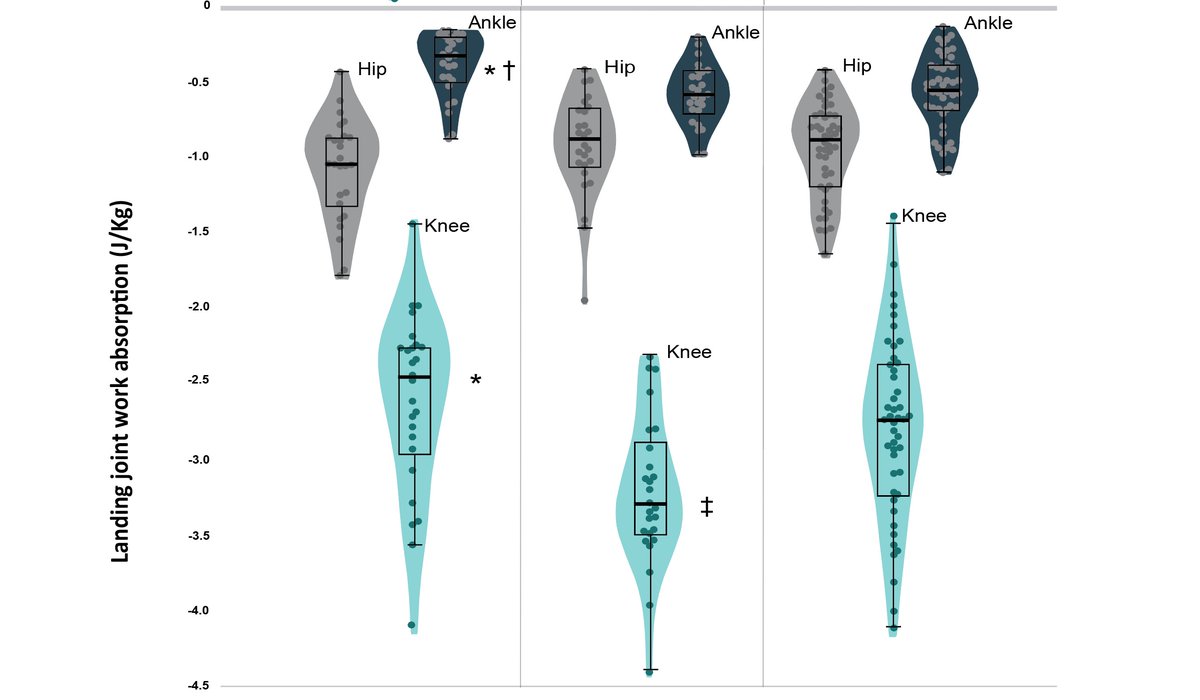
Are you using hop distance as decision to #RTS after #ACLR?
Symmetry in distance hides asymmetry in knee function!
dx.doi.org/10.1136/bjspor…
Check this! 👇
Symmetry in distance hides asymmetry in knee function!
dx.doi.org/10.1136/bjspor…
Check this! 👇

We measured athletes after #ACLR during propulsion & landing of a single leg hop for distance after they have been cleared to #RTS
During propulsion symmetry in work done by the knee is only 69% & during landing it’s 81%, despite achieving 97% of hop distance
During propulsion symmetry in work done by the knee is only 69% & during landing it’s 81%, despite achieving 97% of hop distance

The relatively large between-leg knee work difference is easy to miss as the knee joint contributes little (12%) to propulsion in a single hop for distance. 

During landing, knee is the major absorber (65%). The reconstructed leg often compensates at the hip. 

Athletes adopted a variable whole-body adaptation to reduce knee loading:
⬆️hip flexion
⬆️anterior pelvis tilt
⬆️trunk flexion
⬇️knee flexion
⬆️hip flexion
⬆️anterior pelvis tilt
⬆️trunk flexion
⬇️knee flexion

In our cohort, knee work at the uninvolved (healthy) leg was more than involved and control.
Deconditioning of the uninvolved leg is not always present, but again is missed measuring just hop distance.
Deconditioning of the uninvolved leg is not always present, but again is missed measuring just hop distance.

We also computed lower limb muscle forces using EMG-constrained MSK modelling.
There’s higher contribution of lat hams on the reconstructed limb, during both phases.
Of interest, the high contribution of soleus during the propulsion of horizontal hop & glut max during landing
There’s higher contribution of lat hams on the reconstructed limb, during both phases.
Of interest, the high contribution of soleus during the propulsion of horizontal hop & glut max during landing

During landing, knee is the major absorber (65%). The reconstructed leg often compensates at the hip. 

Athletes adopted a variable whole-body adaptation to reduce knee loading:
⬆️hip flexion
⬆️anterior pelvis tilt
⬆️trunk flexion
⬇️knee flexion
⬆️hip flexion
⬆️anterior pelvis tilt
⬆️trunk flexion
⬇️knee flexion

In our cohort, knee work at the uninvolved (healthy) leg was more than involved and control.
Deconditioning of the uninvolved leg is not always present, but again is missed measuring just hop distance.
Deconditioning of the uninvolved leg is not always present, but again is missed measuring just hop distance.

We also computed lower limb muscle forces using EMG-constrained MSK modelling
There’s higher contribution of lat hams on the reconstructed limb, during both phases
Also of interest, the high contribution of soleus during the propulsion of horizontal hop & glut max during landing
There’s higher contribution of lat hams on the reconstructed limb, during both phases
Also of interest, the high contribution of soleus during the propulsion of horizontal hop & glut max during landing

• • •
Missing some Tweet in this thread? You can try to
force a refresh




